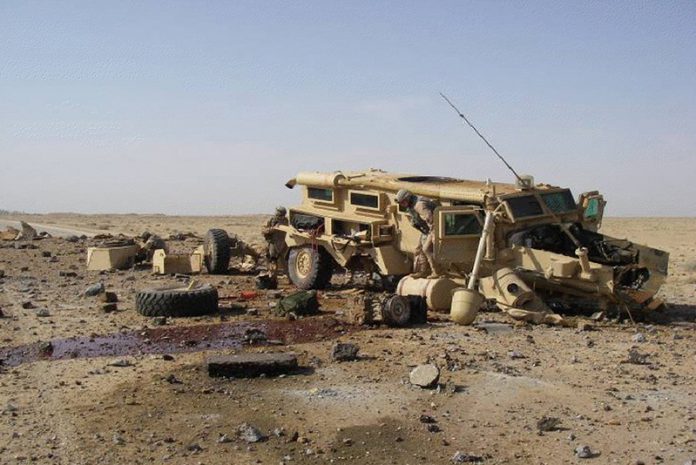
The sudden and widespread use by insurgents of IEDs in Iraq caught regular forces off-guard, and triggered the urgent need to look back at past solutions with led to the creation of the MRAP.
The employment of Improvised Explosive Devices (IED) came as a surprise to the coalition ground forces occupying Iraq in 2003. It also developed into the most serious and deadly threat to coalition operations around the country which, for a number of years, proved difficult to counter adequately.
The insurgent’s abilities to continuously adapt IED designs and employment techniques became a lethal hallmark of the Iraq conflict. Its success their further spawned the adoption and employment of IEDs by other insurgents, revolutionaries, and terrorists across the globe. Today the capability to defeat attack by an IED is an essential requirement of most combat vehicles and often a serious consideration in other tactical vehicle designs as well. The innovation that eventually challenged the IED’s unqualified effectiveness and, thereby, altered the tactical balance away from its mastery of ambush style engagements was the Mine Resistant Ambush Protected vehicle, or MRAP.
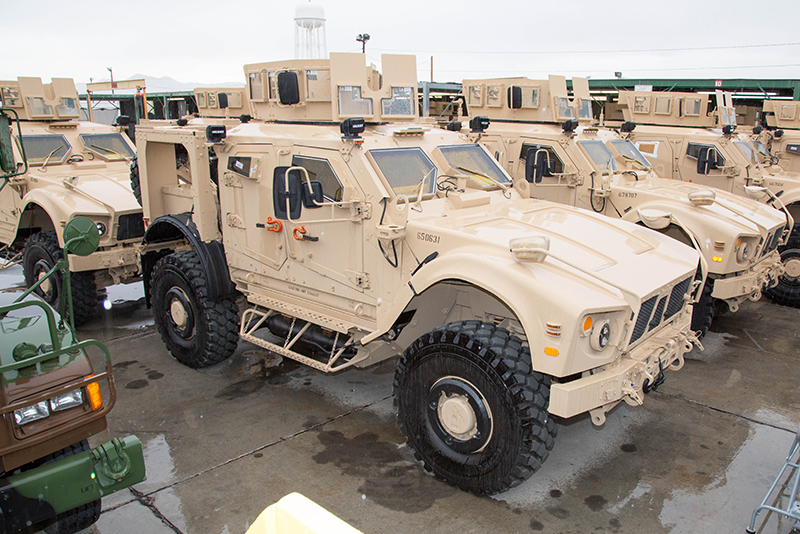
Enter the MRAP
Mines and explosive devices are hardly new to warfare. Massive mine fields were emplaced in every theatre during World War II and the Korean War while locally manufactured booby-traps were a common hazard faced by patrols in the jungles and rice paddies of Vietnam. Generally these were un-attended and passive with their detonation triggered by the action of the vehicle or soldier that happened upon them. They were unexpected and deadly with adverse affects on troop morale which caused them to move more cautiously. They also were extensively used in Rhodesia and against the South African Defence Forces (SADF) in its incursions into Angola, Namibia and Zambia in the Border Wars from 1966 to 1990. In fact, the use of mines was adopted as the principle tactic of the People’s Liberation Army of Namibia (PLAN) against the SADF. Mines came to define the conflict.
This tactical aspect of the South African conflict received little international attention by the major armies but it forecast the dominating role that mines and IEDs would take on in coming conflicts. It also offered some ready-made solutions for protecting against these threats though SADF’s development and fielding of armoured V-hull vehicles. South African developers, including the company OMC that perfected the monocoque hull, developed designs that resisted the blast of an explosion under the vehicle belly or wheels. Combining an angled belly, unencumbered hull form, increased ground clearance and breakaway suspension components, its designers were able to provide a series of vehicles that reliably protected the vehicle’s occupants. A key part of the design’s effectiveness was in directing the blast forces away from the vehicle’s welded armoured crew compartment (which became known as its ‘citadel’). The initial Casspir Mine Protected Vehicle (MPV) design was introduced in 1980 and remains in service with over 22 nations. The design concept was further perfected by TFM Industries as Mamba and later expanded by OMC as the RG-31Nyala MPV. The value of these mine protected vehicles was well recognised and they were acquired and employed in various United Nations peacekeeping operations.
Command Detonation IEDs and Over-Matched
The US Army entered Iraq equipped for a war with defined front lines and rear areas. Its tactical vehicles were largely either heavily armoured M1 tanks and Bradley fighting vehicle or unprotected ‘soft skin’ light, medium and heavy trucks. The AM General High Mobility Multipurpose Wheeled Vehicle (HMMWV, or more generally Humvee), its most widely used vehicle, even in its armoured version, only provided protection against small arms and not IEDs. As the insurgency grew it was these Humvees, in their patrol and security operation roles, that had their vulnerability to the mines and IEDs quickly exposed as casualties mounted. Despite concerted efforts to harden vehicles to these attacks, insurgents recognised and targeted this weakness. In addition, just as the SADF had found, the widening use of mines and IEDs forced attention toward tedious mine sweeping activities, diverting resources and limiting manoeuvre. It also escalated the human cost of the campaign as insurgents sought to undermine public support for the US presence.
The magnitude of the IED threat and the inadequacy of up-armouring efforts became evident and a team from the US travelled to South Africa where it viewed a Casspir successfully cross a live mine field. Less known is that the British Royal Engineers had earlier in 2002 acquired Tempest Protected Patrol Vehicles (PPV), a Technical Solutions Group (TSG) design built by Supacat, for route clearance in the Balkans. Using the urgent needs requirements of Explosive Ordnance Disposal (EOD) as a justification, the US Marines placed an order with TSG’s Force Protection (FPI) for a Hardened Engineer Vehicle (HEV) that incorporated the mine/IED resistance characteristics of these earlier South African designs but refined with lower centre-of-gravity and other improvements. It was based on South Africa’s designs but utilised commercial off-the-shelf components and 54 vehicles provided for in a 2004 contract were delivered. Once fielded, the HEV was an immediate success virtually eliminating Marine EOD team deaths. This caused the Marines to push for more mine protected vehicles focusing on the FPI Cougars, derived from the HEV.
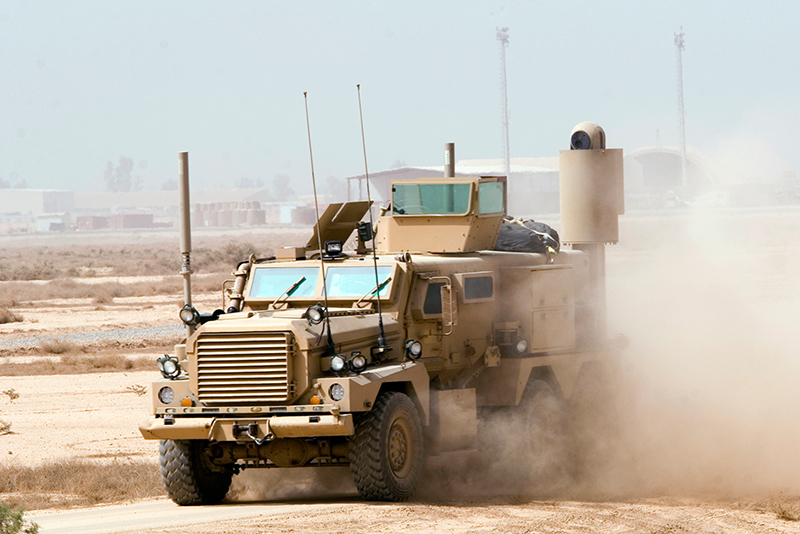
The US Army, which had experience with a handful of RG-31s used in Bosnia, had also acquired nine of this vehicle in 2003 for route clearance. It continued to acquire and field these but in limited numbers and strictly in mine clearance. It was the British Army that led the fielding of mine protected vehicles for general troop carrying duties and not simply these specialty roles, like EOD. Their Mastiff 6×6 and Ridgeback 4×4 were Cougar derivatives that were configured for patrol and tactical employment by combat troops. BAE Systems also won a contract at this time to provide another Cougar version, the LAV, to the Iraqi Army in a license from FPI.
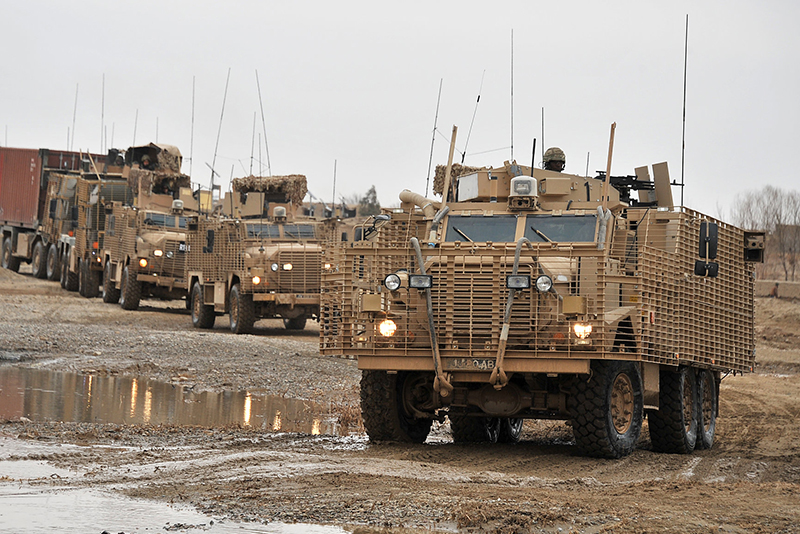
By early-2006 the Marine Corps’ leadership was convinced that a wide fielding of mine protected vehicles was essential to operate in Iraq. Facilitated by the attention and support of a new US Secretary of Defence, Dr. William Gates, they moved to rapidly acquire 1,022 vehicles, now being referred to as MRAPs. A survey indicated that for them the FPI Cougar, which was also to be manufactured in collaboration with General Dynamics Land Systems, was the most available. The Marines, feeling they could best move the programme forward, insisted on managing the acquisition.
The US Army remained uncommitted to the MRAP even though the Marine programme approach was structured to anticipate the Army requirement and its acquisition reflected this belief. As a result contracts were issued to five companies each with entirely different designs. This was reasoned by acquisition officials to offer faster production and delivery, as well as alternatives if any company experienced development or production delays. This approach also had long term support impacts due to lack of standardisation which complicated logistics.
MRAP models fielded included the RG-31 in a contract with General Dynamics Land Systems Canada (which had the production license from OMC for North America) with vehicles manufactured at multiple US sites and at OMC in South Africa. The RG-33, an OMC design, was provided by BAE Ground Systems (as BAE now owned OMC). IMG/Navistar produced the MaxxPro, a design that returned to the earliest Mumba approach which placed the protected capsule on top of a chassis (rather than the latter integrated monocoque design). The company also capitalised on its commercial heavy truck supplier network utilising these commercial components as had early Rhodesian and SADF models. It even used bolt-on rather than welded armour.
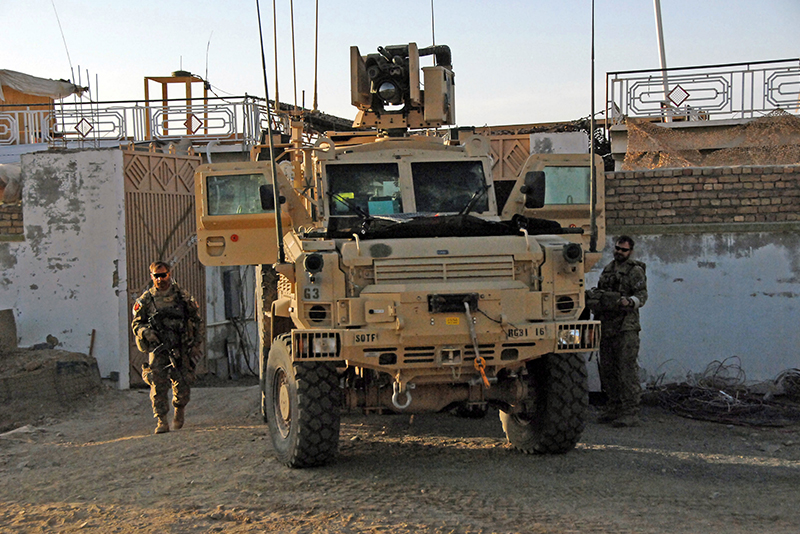
Armour Holdings (which became BAE Tactical Vehicle Systems) provided the Caiman which was designed with components common to the US Army FMTV, its standard medium truck. In fact, Caiman was produced on the FTMV assembly line. Force Protection Industries (FPI) of Charleston, SC, produced Cougars. FPI also produced the Buffalo which was strictly not an MRAP but rather a special mine/IED clearance vehicle for EOD but managed by the MRAP office. Mike Aldrich, a former vice president at FPI stated that the company “recognising the scope of the MRAP needs and its manufacturing limits arranged Cougar production with other companies including General Dynamics Land Systems (the supplier of the M1 tank), Spartan Motors, Armour Holdings (which became BAE Tactical Vehicles), Textron, and the Marine Corps Logistics Centre.”
In addition to vehicles acquired under the MRAP programme itself, a large number of mine protected and counter mine vehicles/systems were acquired as part of the US Army’s Assured Mobility Systems (AMS) effort. These, like Buffalo, were specifically equipping counter-mine and route clearance teams. A number of RG31s and other vehicles including highly specialised mine detection systems like the Husky and Meerket VMMD were acquired and fielded separately under AMS.
Secretary Gates, after being in office for only a few months realised the importance of the MRAP and in 2007 directed it to be not only a Joint Programme which would include the Army. He also made it a priority effort which allowed its rapid expansion. The first MRAPs ordered by this now Joint Programme Office (JPO) were delivered to Iraq in July 2007. Each service in the end preferred different designs. For the Marines and Navy it was the Cougar. The Army primarily used MaxxPro. The SOCOM and the US Air Force preferred the RG-33. The majority of RG-31s were used in Afghanistan where its manoeuvrability was welcome. The value of the MRAP is evident by the fact that as it was widely fielded in country, IED casualties and particularly deaths dropped and 95 percent of those involved in an attack were back in action the next day.
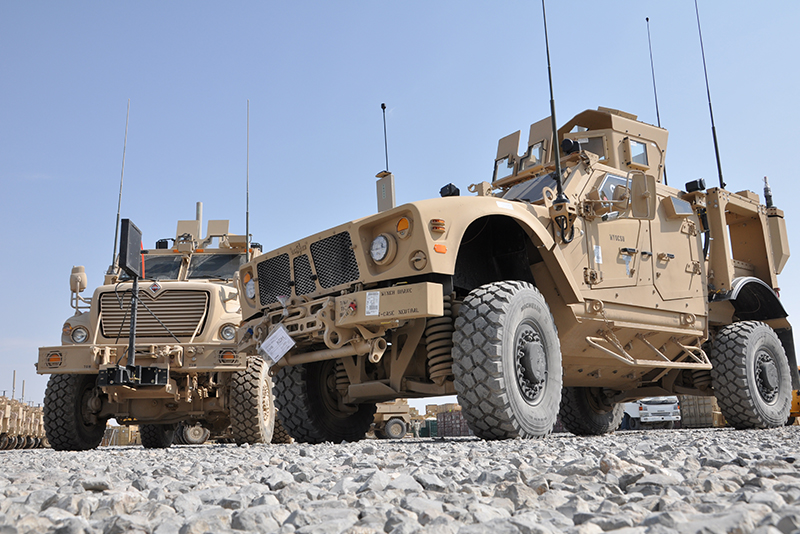
MRAP Lessons
The return of the mine/IED and MRAP response offers both military system development and vehicle survivability technical design lessons. Firstly, the objective from inception was to field an available solution as rapidly as possible. An 80 percent solution initially was deemed acceptable if it met set essential requirements. However, even as it was fielded a spiral development was undertaken identifying, validating and implementing improvements. This necessitated an aggressive and continuous testing programme and a system to capture and act on field feedback. It also required transparency across the programme including users, the programme office and industry participants. The result was that MRAPs were continually improving by determining short comings and then seeking and applying solutions. This approach allowed better understanding of IED destructive forces and application of blast resistance seats, shock mitigating floors, independent suspensions, and other items. The MRAPs fielded in 2013 were vastly more capable with enhanced survivability than those introduced just a few years earlier. This spiral fielding and development worked far better than its alternative that would attempt to jump from one system to a completely new and theoretically better one.
The MRAP efforts provided a deeper understanding of the mine/IED threat and offered the ground work for addressing it in other vehicles. The application of mine/IED protection as a standard criterion in current tactical and combat vehicles draws closely from these efforts. The development and introduction of Stryker 8×8 with its Double V-hull is an example. Lessons of the MRAP have allowed for new designs that incorporate their protection levels into vehicle types not specifically focused on mine protection. Rather than being a driving factor as in MRAPs, it is now one in a combination of characteristics that make up a vehicles mission role capabilities, in that mine resistance is now a requirement in infantry fighting vehicles, reconnaissance vehicles, and even tactical trucks.
But Imine protection is a characteristic not a mission. Not being fielded toward specific roles – like motorised infantry carrier, or patrol vehicle – found most MRAPs without an advocate. The lack of any substantial numbers of MRAPs in force structure and lines of MRAPs in storage attest to this. Clearly the programme was successful in meeting its narrowly defined goals yet this might be qualified by the US military’s lack of foresight in considering at some point it’s broader and future roles and force integration.












